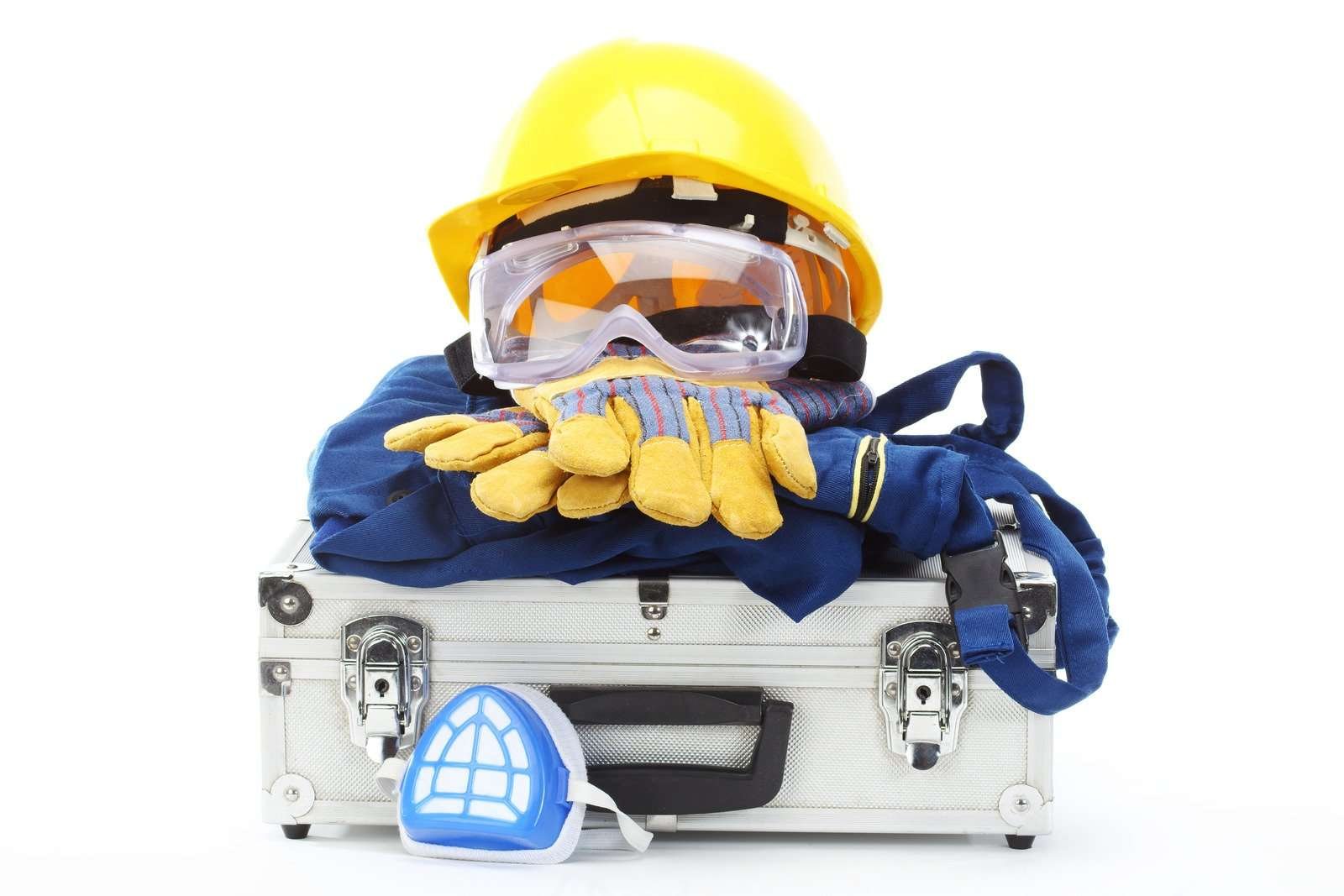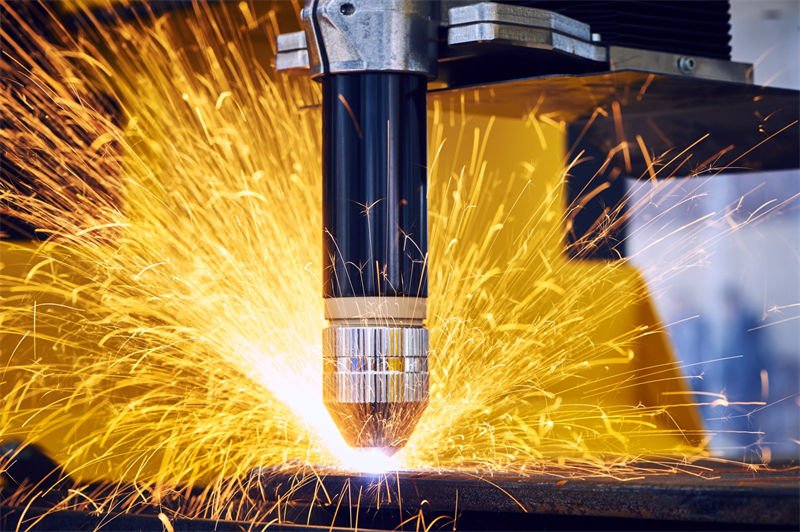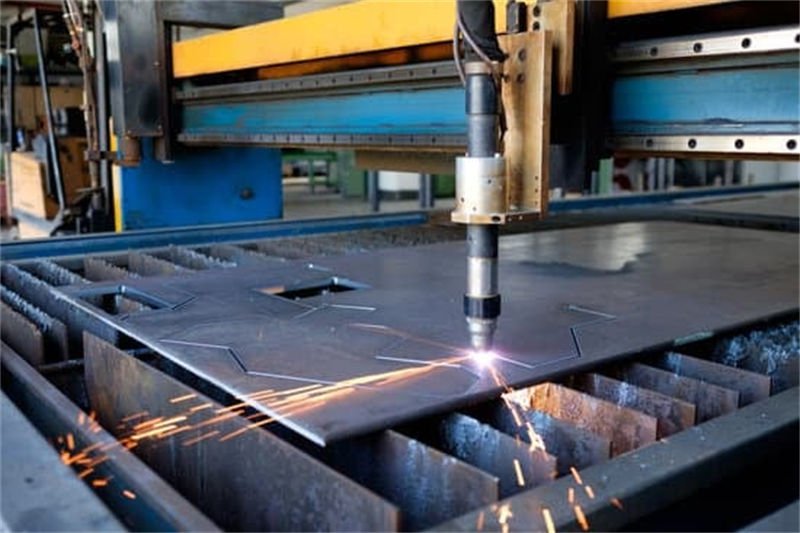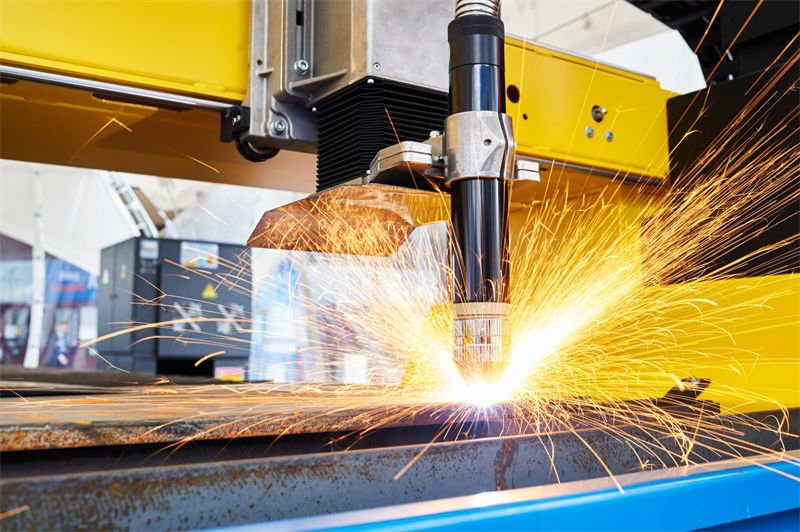
Ever experienced the excitement of cutting metal smoothly and easily? Plasma cutters are amazing tools. However, they have their own dangers.
When operating a plasma cutter, always wear the right safety gear. Good air flow is important. Keep combustible items far away. This prevents electric shocks, burns and breathing in harmful gases. Remember these safety measures. These are crucial.
I remember my first days using a plasma cutter. I was very careful, like a parent giving their child the car keys for the first time. And it’s understandable! Basic safety steps, like using protective gear and having good ventilation, are important. But there is more to learn. Join me to explore deeper details for safer and better use of this powerful tool. It really matters.
Plasma cutters require PPE for safe operation.True
Using PPE prevents injuries from sparks, heat, and metal fragments.
Ventilation is unnecessary when using plasma cutters.False
Proper ventilation prevents inhalation of harmful fumes during cutting.
How Does Proper Ventilation Affect Plasma Cutting Safety?
Have you ever thought about how air plays a big role in your safety when doing plasma cutting? Air is important. It impacts safety a lot when cutting with plasma tools. This might surprise you.
Proper air flow in plasma cutting is key for getting rid of harmful fumes and tiny particles. This creates a safer place for workers. Setting up and keeping a good ventilation system helps lower breathing dangers. It really makes the work area safer.

The Role of Ventilation in Plasma Cutting
I remember entering a plasma cutting workshop for the first time. It felt like entering a different world. The air smelled strongly of metal and smoke. This was interesting, but the fumes turned out to be dangerous. Plasma cutting uses high heat to cut metals, which releases harmful fumes and tiny particles. Without proper ventilation, these can damage your lungs.
Setting up a proper ventilation system helps in capturing and removing these harmful substances, significantly improving air quality in the workplace.
Types of Ventilation Systems
Choosing ventilation for my workshop felt as important as selecting the right tools. I found that local exhaust ventilation (LEV) systems work really well. They capture fumes right where they start. This keeps the workshop air safe for me and my team.
There are various types of ventilation systems suitable for plasma cutting environments, including local exhaust ventilation (LEV), general exhaust systems, and downdraft tables. LEVs are particularly effective as they capture fumes directly at the source, preventing them from dispersing into the general workspace.
| System Type | Benefits | Considerations |
|---|---|---|
| LEV | Captures fumes at source | Requires regular upkeep |
| General Exhaust | Circulates air throughout space | May not target all fumes |
| Downdraft Table | Combines work surface with exhaust | Can be costly to install |
Understanding Local Exhaust Ventilation1 teaches how to set up a system that is both useful and safe.
Guidelines and Best Practices
Installing a good ventilation system is just the beginning. Maintenance keeps it working well. I regularly check filters and clear ducts from blockages. It’s not only for peace of mind; it also meets the important OSHA guidelines for ventilation2, which are needed for safety compliance.
Implementing a ventilation system isn’t just about installation—it’s also about adherence to guidelines and maintenance practices. Regular inspections ensure that filters are functioning correctly and ducts are clear of obstructions.
Assessing Your Workspace
Before installing a system, evaluate your workspace’s needs. I looked at my room size, how many plasma cutters we used, and how often. This helped me pick the right system and stay within health regulations.
Before installing a ventilation system, assess the specific needs of your workspace by considering factors like area size, number of plasma cutters, and frequency of use.
Conducting a Workplace Assessment3 offers valuable insights for safety improvements.
Maintaining Air Quality
Monitoring air quality is something I really focus on. We use sensors to check particle levels in the air. Reminding the team about personal protective equipment (PPE) is important too for extra safety.
Regular monitoring of air quality is essential to ensure that ventilation systems function effectively.
Learn more about PPE for Plasma Cutting4 to see how PPE adds to your ventilation strategy.
Proper ventilation prevents respiratory hazards.True
Ventilation removes harmful fumes, reducing respiratory risks for workers.
Downdraft tables are the cheapest ventilation option.False
Downdraft tables can be costly to install compared to other systems.
What Personal Protective Equipment Is Essential for Plasma Cutting?
Have you ever looked at a plasma cutter and thought about staying safe? I have. Safety gear is needed to avoid danger. It’s crucial. Let’s explore the essential equipment that protects us.
Plasma cutting requires flame-resistant clothes. Safety goggles and face shields protect your eyes. Ear protection shields from loud noise. Sturdy gloves guard your hands against burns and metal splatter. This gear is very important to stay safe.

Understanding the Need for Protective Gear
I remember the first time I watched a plasma cutter in action. The sparks looked like a mini fireworks show, fascinating and a bit scary. Plasma cutting uses extremely hot ionized gas to cut through metals. This heat creates beautiful sparks and flying pieces. It’s an exciting scene that requires safety measures5.
Important Protective Gear for Plasma Cutting
- Flame-Resistant Clothing
- Once, I wore a normal cotton shirt for a quick task. Big mistake! Small sparks landed on my shirt and it was a close call. That’s why clothing made from materials like Kevlar or Nomex is crucial.
- Safety Goggles and Face Shields
- Eyes need protection from the bright UV light. I learned this lesson after getting a temporary condition called ‘arc eye’ from not wearing proper goggles. Goggles that meet ANSI Z87 standards are necessary.
- Ear Protection
- The noise is very loud. Whether you like earplugs or earmuffs, protecting your hearing is important.
- Sturdy Gloves
- Hands are tools, so shielding them from burns and cuts is essential. Leather gloves have been my reliable choice.
| PPE Component | Functionality | Recommended Material |
|---|---|---|
| Flame-Resistant Clothing | Protects against burns | Kevlar, Nomex |
| Safety Goggles | Shields eyes from UV and flying debris | Polycarbonate |
| Face Shields | Adds an extra layer of facial protection | Polycarbonate |
| Ear Protection | Reduces noise impact | Foam, Plastic |
| Sturdy Gloves | Shields hands from heat and sharp edges | Leather |
Additional Considerations
- Respiratory Protection: Depending on the metal being cut, toxic fumes might be present; therefore, a respirator is crucial.
- Foot Protection: Steel-toed boots provide safety from falling items and hot particles.
Choosing the right protective gear is not just about following rules; it’s about going home safely each day. If you’re searching for certain brands that meet industry standards, looking at product reviews6 can be enlightening.
Flame-resistant clothing is optional for plasma cutting.False
Flame-resistant clothing is essential to prevent burns from hot metal.
Ear protection is unnecessary during plasma cutting.False
Ear protection is crucial due to the high noise levels generated.
How Can You Minimize the Risk of Electric Shock While Plasma Cutting?
Did you ever experience the excitement of plasma cutting and the fear of an electric shock? Let’s find a way to enjoy that excitement without any fear.
I wear the right safety gear to reduce the risk of electric shock during plasma cutting. Equipment stays grounded securely. A dry surface provides a safer work area. Cables get checked often for any damage. Safety rules protect my workspace. My workspace stays safe.

Importance of Personal Protective Equipment (PPE)
Wearing the right personal protective equipment7 is very crucial. My go-to gear includes strong insulating gloves, protective goggles, and flame-resistant clothing. These items do more than look good. Insulating gloves protect my hands from electric shocks, while goggles shield my eyes from stray sparks.
Proper Grounding of Equipment
Every time I prepare to cut, the plasma cutter must be properly grounded. This involves connecting the ground clamp securely to the metal workpiece. My life depends on it, and this step cannot be skipped as failure to do so can lead to electric shock.
Working on Dry Surfaces
I learned early that moisture and electricity are a dangerous mix. Ensure your workspace is dry and free from any liquid spills. Rubber mats offer extra safety by providing additional insulation. This step keeps me free from shocks; it’s simple but crucial.
| Safety Tip | Description |
|---|---|
| Inspect Cables | Check for wear and tear regularly |
| Use GFCI Outlets | Ground Fault Circuit Interrupter outlets cut power in emergencies |
| Maintain Equipment | Regular maintenance reduces risk of malfunction |
Regular Inspection and Maintenance
Before any work starts, inspecting all cables and connections is important. Damaged cables can expose live wires, increasing the risk of shock. Finding a frayed cable means avoiding a big shock later—replace damaged wires without delay. That’s a rule I always follow.
Understanding Electrical Safety Guidelines
I study electrical safety guidelines8 carefully. These guidelines serve as my safety map by providing comprehensive instructions on safe operation procedures, helping prevent accidents when using high-voltage equipment.
Additional Measures
- Working alone is risky; having someone nearby is wise.
- A buddy system is not just for children; it’s smart for extra safety.
- Clear signs around the workspace warn others of potential dangers.
- First aid kits are as important as my tools; keep them readily available in case of an emergency.
- Training everyone in emergency protocols provides extra safety assurance.
These practices help create a safer environment for my team and me. In any industrial setting, safety is really necessary—not just a priority.
Wearing PPE reduces the risk of electric shock.True
PPE like gloves and goggles protect against electric shock and sparks.
Moisture does not affect electric shock risk.False
Moisture increases conductivity, raising the risk of electric shock.
How Can I Safely Handle Flammable Materials During Plasma Cutting?
Plasma cutting involves a hot and careful craft. This technique mixes accuracy with safety, particularly when dealing with flammable items. I will explain the safest methods for slicing metal smoothly.
When dealing with flammable items in plasma cutting, clear the area of things that might catch fire. Good air flow is crucial, so ventilate the space properly. Inspect your tools often for safety. A fire extinguisher should remain nearby. Train everyone on what to do in an emergency.

Importance of a Safe Workspace
A safe workspace is very important, no question about it. Imagine setting up for a plasma cutting session and realizing your workshop looks like a dangerous obstacle course. Disaster might be close! Keeping flammable materials9 far away and maintaining a tidy area prevents hazards and helps me work quickly and smoothly.
Checklist for a Safe Workspace
| Task | Status |
|---|---|
| Remove combustibles from the area | ✅ |
| Ensure proper ventilation | ✅ |
| Check all safety gear is in place | ✅ |
Equipment Maintenance
Think of your plasma cutter like a car: regular check-ups are needed. I learned from experience that ignoring maintenance brings unexpected issues. Before starting, I always check the equipment for wear and replace faulty parts.
Training and Emergency Preparedness
Training is really critical. My team often goes through training programs10, making sure everyone knows what to do if something goes wrong. It’s reassuring to know we’re prepared.
Emergency Kit Essentials
| Item | Quantity | Location |
|---|---|---|
| Fire Extinguisher | 2 | Near exit points |
| First Aid Kit | 1 | Workshop office |
Ventilation and Air Quality
Proper ventilation is essential, not just a luxury. Installing exhaust systems and using portable fume extractors have improved my workshop’s air quality. This keeps us safe from harmful fumes.
Key Ventilation Steps
- Install exhaust systems above cutting tables.
- Regularly check filters and fans.
- Open windows or use fans for cross-ventilation.
Personal Protective Equipment (PPE)
Personal protection gear is my shield – fire-resistant clothing, gloves, eye protection. It might seem bulky, but safety is worth it. Peace of mind is priceless.
By following these best practices, I handle the risks of plasma cutting and keep my workspace safe and productive. Revisiting safety rules often and updating them when needed prepares us for anything.
For more details, explore resources on plasma cutting safety11 to learn about industry standards and new ideas.
Proper ventilation is unnecessary for plasma cutting safety.False
Ventilation is crucial to dissipate fumes and maintain air quality.
Fire-resistant clothing is essential during plasma cutting.True
Fire-resistant clothing protects against immediate and long-term risks.
Conclusion
Plasma cutting requires essential safety precautions, including proper ventilation, personal protective equipment (PPE), and regular maintenance to prevent hazards like electric shocks and harmful fumes.
-
Discover how Local Exhaust Ventilation systems work and why they are effective in capturing harmful fumes during plasma cutting. ↩
-
Explore OSHA’s comprehensive guidelines on ventilation to ensure your workplace meets safety standards. ↩
-
Gain insights on assessing your workspace needs for effective ventilation solutions in plasma cutting. ↩
-
Understand the role of PPE in enhancing safety during plasma cutting alongside proper ventilation. ↩
-
Provides a detailed understanding of why PPE is critical in plasma cutting for safety. ↩
-
Helps in choosing high-quality PPE by reviewing top-rated brands and models. ↩
-
This link provides essential information on why PPE is crucial in preventing electric shocks during metalwork. ↩
-
Exploring this link helps understand detailed safety protocols for operating plasma cutters safely. ↩
-
Discover effective methods for storing flammable materials safely away from workspaces to prevent accidents. ↩
-
Explore comprehensive training programs that equip teams with essential skills for handling emergencies efficiently. ↩
-
Stay informed about the latest safety standards and practices in plasma cutting to enhance workplace safety. ↩



